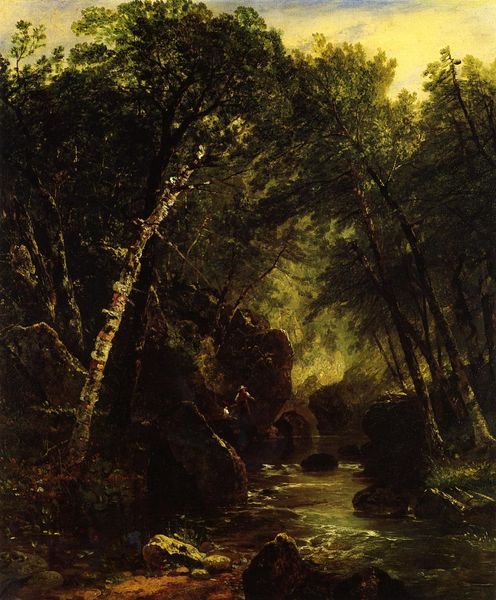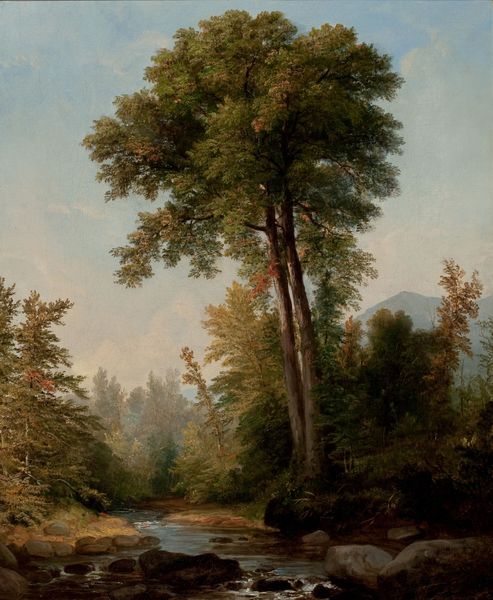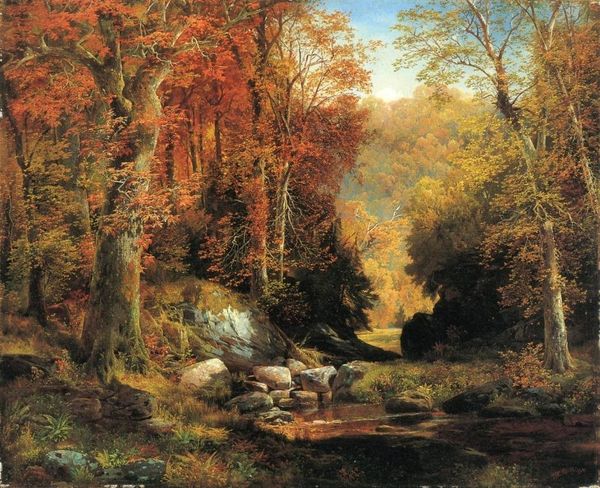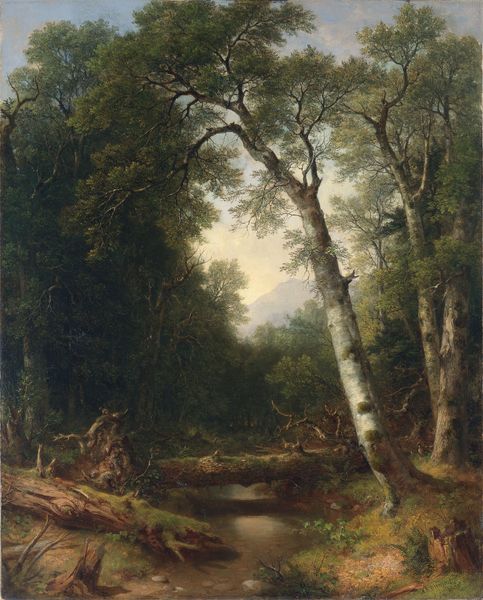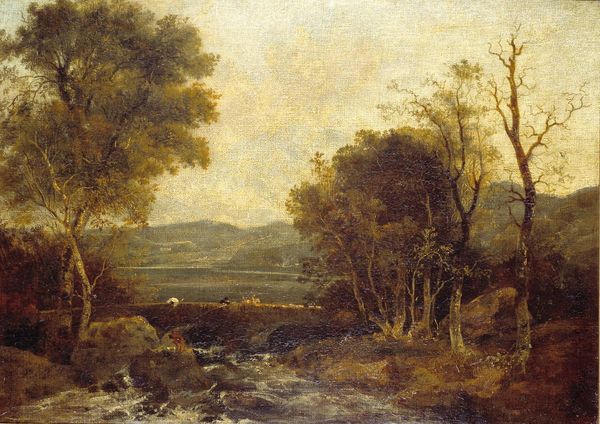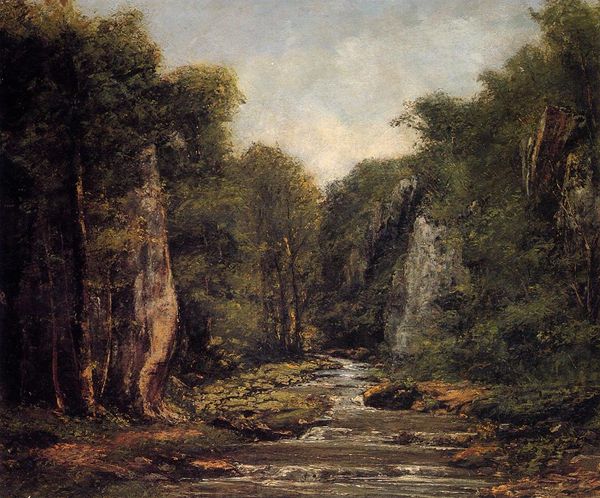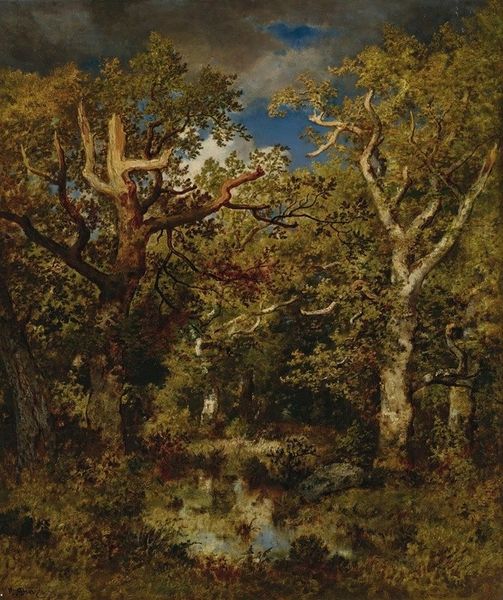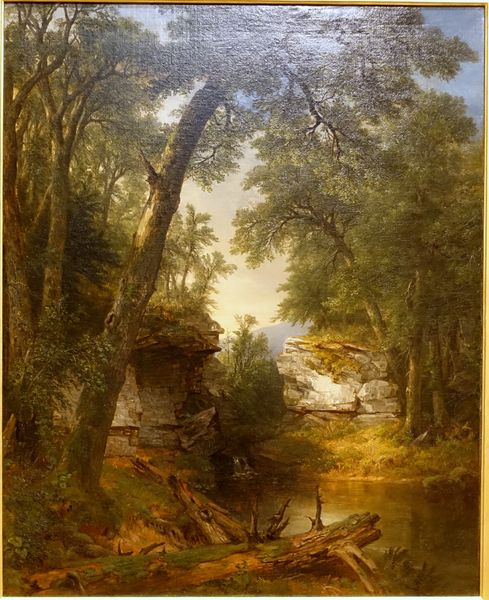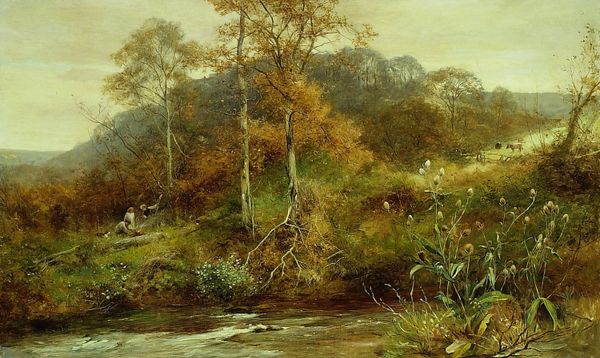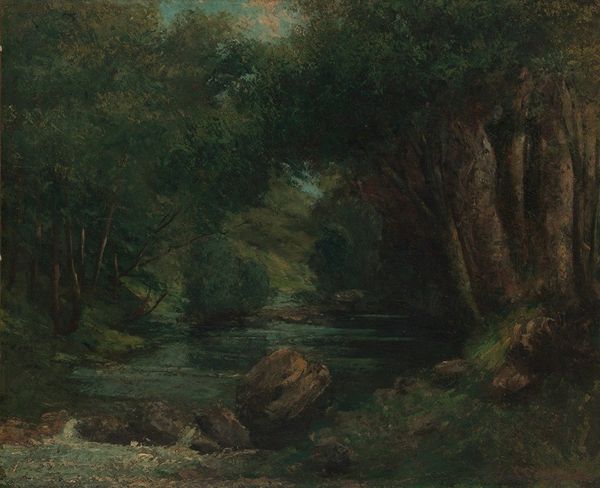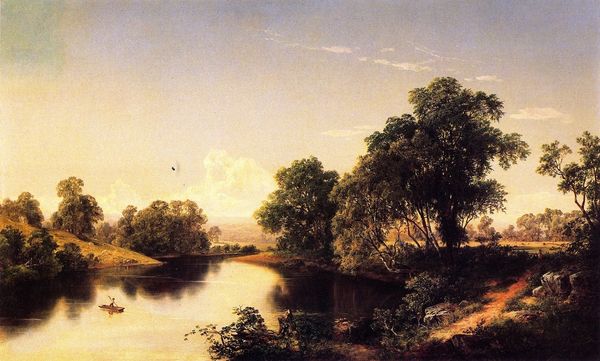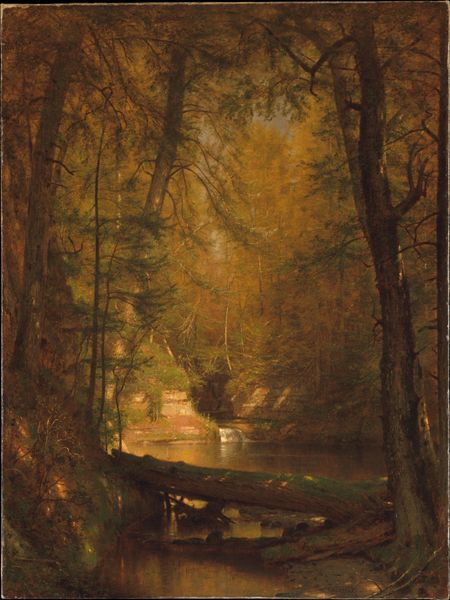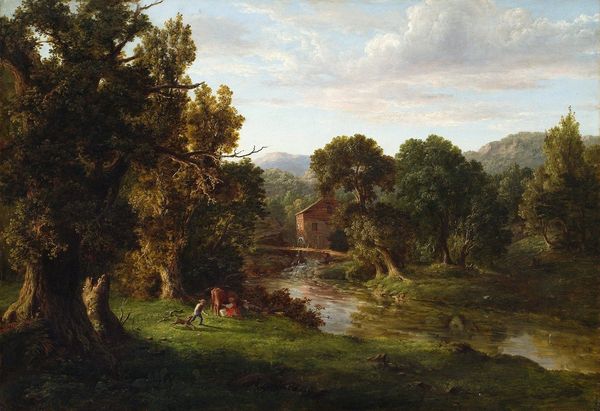
painting, oil-paint
#
painting
#
oil-paint
#
landscape
#
nature
#
natural-landscape
#
hudson-river-school
#
naturalism
#
nature
#
realism
Copyright: Public domain
Curator: Before us is “Autumn, New Hampshire,” an oil painting by William Hart. What strikes you initially about this autumnal scene? Art Historian: There's a real sense of longing here. The amber light filtering through the trees evokes nostalgia. It feels like the visual embodiment of bittersweet memories. Curator: Interesting. My initial focus is on Hart's composition. The verticality of the trees contrasts dramatically with the horizontal flow of the water. And look at the way he uses aerial perspective, blurring the background to create depth. Art Historian: Water often symbolizes the passage of time. Coupled with the autumn setting, there’s a poignant sense of nature’s cycle, reminding us of mortality and regeneration. Autumn is the ultimate symbol of transformation, isn’t it? Curator: Undoubtedly. Hart manipulates the light masterfully to direct the viewer’s eye through the composition. Observe how the brightest point, where the water catches the light, serves as a focal point, creating a rhythmic visual cadence as it snakes through the space. Art Historian: It's like the light itself is carrying a message. Gold often relates to knowledge, insight, and illumination. And in the context of the Hudson River School, isn't there an implicit message here about America's potential? The land as both beautiful and promising? Curator: Possibly. Although to see it purely as nationalistic feels limiting. The balanced arrangement of forms, from the rugged rocks to the delicate foliage, shows us Hart’s commitment to visual harmony and proportional relationships. It speaks more to formal concerns than overt symbolism. Art Historian: Fair enough, but artists don't exist in a vacuum. I think Hart taps into deep-seated human associations with nature, layering those symbolic meanings into this evocative landscape. It moves beyond simple representation to engage something primordial in us. Curator: Ultimately, I appreciate how the interplay of formal elements elicits such diverse interpretive responses. It's the mark of successful artistry. Art Historian: Precisely. This painting serves as a mirror, reflecting our own interpretations of the symbols embedded within nature's grand design. A poignant endnote for today.
Comments
No comments
Be the first to comment and join the conversation on the ultimate creative platform.
